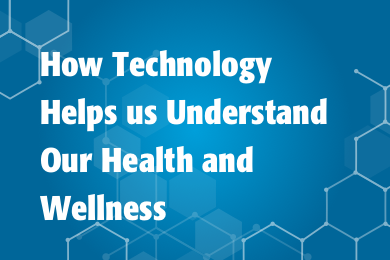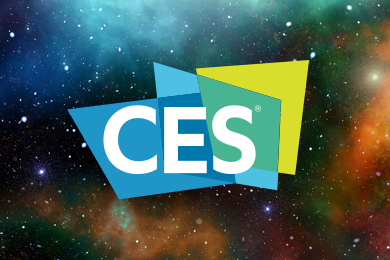September 16, 2019
 Cities around the world aren’t getting any younger, and what can be considered extra patina and character reveals a greater underlying issue- a crumbling infrastructure system. From our roads and bridges, to electrical grids and sewage systems, increased population is adding stress to systems that are already out of date for the communities they support.
Cities around the world aren’t getting any younger, and what can be considered extra patina and character reveals a greater underlying issue- a crumbling infrastructure system. From our roads and bridges, to electrical grids and sewage systems, increased population is adding stress to systems that are already out of date for the communities they support.
However, technological and scientific advances have given rise to a new approach to urban infrastructure and city planning in Smart Cities and communities. According to IEEE Senior member and IEEE Industry Applications Society President Georges Zissis there are five trends in particular that are creating new challenges and opportunities for city leaders at the global level:
- Urbanization across the globe
- Surging demand for energy and resources
- Increasing energy costs and more recently the global economic slowdown
- Cities’ desire to establish a strong identity
- Growing connectivity
“ The ‘Smart City’ concept is a robust answer to all those challenges. A smart city incorporates the combination of IoT technology and information and communication technology (ICT) in a secure manner to manage a city’s assets. Smart cities can transform the life and work of its inhabitants, both economically and socially,” Zissis says.
Perhaps one of the most important components of a smart city is its smart infrastructure. We sat down with Zissis to learn more about what makes this concept so essential solution to our aging cities and their internal workings.
Q: What is a smart city and how does it utilize smart lighting and the smart grid?
There is an important difference between “Smart City” and “Sustainable City.” The second is defined as cities that are built on eco-friendly basis. These may not necessarily include “intelligent” systems but are built more with an energy-efficient or environmently-friendly objective.
From a technological point of view only, smart cities rely on smart grids for energy; smart buildings that include homes, tertiary buildings and commercial centers; smart infrastructure that includes roads, tunnels, parking lots, and any type of urban stations and ports. Add to that smart mobility with smart vehicles and smart traffic control. This is a very complex “system of systems … Lighting is present to all those technological segments. Therefore, smart street lighting is a cornerstone for building smart cities.
Q: What are the technologies that are making smart street lighting for smart cities possible?
Sensors are used in a number of ways within buildings and the public space in the cities. Sensors have been used for decades for security, control of lighting and personal convenience. They can be installed in a wall box opening or in street lighting pole, they usually have a combination of a sensor along with the power electronics to control the load.
- Daylight sensors: are photoelectric cells that switch on the luminaires exactly when natural light becomes insufficient (cloudy day, nightfall…) so as to provide safety and well-being in the public space.
- Irradiance sensors: Cities or utilities that rely on solar energy as part of their energy mix can plant sensors on street light networks to monitor solar intensity in various areas to assist with grid balancing.
- Movement sensors: In non-linear activity areas (squares, parking garage, residential streets… places with a little nocturnal activity), the lighting can be dimmed to a minimum most of the time. By using movement sensors, levels can be raised as soon as a pedestrian or a slow vehicle is detected in the area. This light-on-demand function enhances the safety and the well-being of the users while saving energy.
- Speed and direction sensors: Compared to movement sensors, a speed (and direction) sensor works with a wider detection area to classify the identified moving item following its speed and its direction. This classification provides the right response according to predefined lighting scenarios. Solutions fitted with speed and direction sensors operate in large areas to ensure safety and well-being in the most sustainable way.
- Image sensors or cameras: These types of sensors can, for example, count pedestrians or cyclists to monitor sidewalk congestion, or even to triangulate gunshots and alert authorities of other types of crimes. Some lighting vendors now offer smart lighting systems with modules that incorporate surveillance cameras and audio recorders. These tools enable authorities to record and review activity and conversations on city streets, college campuses, airports and other bustling public spaces. Cities often look to deploy cameras in frequently vandalized parks, accident-prone intersections, and high crime neighborhoods.
Q: How have cities successfully implemented smart street lighting?
Many major cities around the world are now trying to adopt “smart lighting” systems. However, today, we can speak about (large or small scale) demonstrators than full adoption. The main breaks to a full adoption are (1) costs; (2) population acceptance and associated legislation; (3) technology maturity. There are some examples of cities that have today “smart lighting” demonstrators.
Q: How does smart lighting benefit the planet?
Adopting greater intelligence is imperative to managing global population growth. In the next decade, according to the World Health Organization, nearly 60% of the world’s population will live in urban areas. At the same time, the revolution in information and communications technology is making knowledge a competitive resource. Data is the new currency, the raw material that is changing the way cities operate. Thus, the grid will become another IP platform connecting people and devices through IP. Within a Smart City context, however, infrastructure will become a dynamic platform enabling continuous innovation.
For more information about Georges’ research head to the Industry Application Society page and be sure to check out the Smart Grid Cybersecurity workshop, Dec 12-13th in Atlanta, Ga.
For more information about Georges’ research head to the Industry Application Society page and be sure to check out the Smart Grid Cybersecurity workshop, Dec 12-13th in Atlanta, Ga.





 MEANINGFUL MOMENTUM OR RUNNING IN PLACE?
MEANINGFUL MOMENTUM OR RUNNING IN PLACE? AI Through Our Ages
AI Through Our Ages Liquid Infrastructure: Our Planet's Most Precious Resource
Liquid Infrastructure: Our Planet's Most Precious Resource The Impact of Technology in 2025
The Impact of Technology in 2025 Quantum and AI: Safeguards or Threats to Cybersecurity?
Quantum and AI: Safeguards or Threats to Cybersecurity? Why AI Can't Live Without Us
Why AI Can't Live Without Us Bits, Bytes, Buildings and Bridges: Digital-Driven Infrastructure
Bits, Bytes, Buildings and Bridges: Digital-Driven Infrastructure Impact of Technology in 2024
Impact of Technology in 2024 Emerging AI Cybersecurity Challenges and Solutions
Emerging AI Cybersecurity Challenges and Solutions The Skies are Unlimited
The Skies are Unlimited Smart Cities 2030: How Tech is Reshaping Urbanscapes
Smart Cities 2030: How Tech is Reshaping Urbanscapes Impact of Technology 2023
Impact of Technology 2023 Cybersecurity for Life-Changing Innovations
Cybersecurity for Life-Changing Innovations Smarter Wearables Healthier Life
Smarter Wearables Healthier Life Infrastructure In Motion
Infrastructure In Motion The Impact of Tech in 2022 and Beyond
The Impact of Tech in 2022 and Beyond Cybersecurity, Technology and Protecting Our World
Cybersecurity, Technology and Protecting Our World How Technology Helps us Understand Our Health and Wellness
How Technology Helps us Understand Our Health and Wellness The Resilience of Humanity
The Resilience of Humanity Harnessing and Sustaining our Natural Resources
Harnessing and Sustaining our Natural Resources Creating Healthy Spaces Through Technology
Creating Healthy Spaces Through Technology Exceptional Infrastructure Challenges, Technology and Humanity
Exceptional Infrastructure Challenges, Technology and Humanity The Global Impact of IEEE's 802 Standards
The Global Impact of IEEE's 802 Standards Scenes of our Cyber Lives: The Security Threats and Technology Solutions Protecting Us
Scenes of our Cyber Lives: The Security Threats and Technology Solutions Protecting Us How Millennial Parents are Embracing Health and Wellness Technologies for Their Generation Alpha Kids
How Millennial Parents are Embracing Health and Wellness Technologies for Their Generation Alpha Kids Space Exploration, Technology and Our Lives
Space Exploration, Technology and Our Lives Global Innovation and the Environment
Global Innovation and the Environment How Technology, Privacy and Security are Changing Each Other (And Us)
How Technology, Privacy and Security are Changing Each Other (And Us) Find us in booth 31506, LVCC South Hall 3 and experience the Technology Moon Walk
Find us in booth 31506, LVCC South Hall 3 and experience the Technology Moon Walk Virtual and Mixed Reality
Virtual and Mixed Reality How Robots are Improving our Health
How Robots are Improving our Health IEEE Experts and the Robots They are Teaching
IEEE Experts and the Robots They are Teaching See how millennial parents around the world see AI impacting the lives of their tech-infused offspring
See how millennial parents around the world see AI impacting the lives of their tech-infused offspring Take the journey from farm to table and learn how IoT will help us reach the rising demand for food production
Take the journey from farm to table and learn how IoT will help us reach the rising demand for food production Watch technical experts discuss the latest cyber threats
Watch technical experts discuss the latest cyber threats Explore how researchers, teachers, explorers, healthcare and medical professionals use immersive technologies
Explore how researchers, teachers, explorers, healthcare and medical professionals use immersive technologies Follow the timeline to see how Generation AI will be impacted by technology
Follow the timeline to see how Generation AI will be impacted by technology Learn how your IoT data can be used by experiencing a day in a connected life
Learn how your IoT data can be used by experiencing a day in a connected life Listen to technical experts discuss the biggest security threats today
Listen to technical experts discuss the biggest security threats today See how tech has influenced and evolved with the Games
See how tech has influenced and evolved with the Games Enter our virtual home to explore the IoT (Internet of Things) technologies
Enter our virtual home to explore the IoT (Internet of Things) technologies Explore an interactive map showcasing exciting innovations in robotics
Explore an interactive map showcasing exciting innovations in robotics Interactively explore A.I. in recent Hollywood movies
Interactively explore A.I. in recent Hollywood movies Get immersed in technologies that will improve patients' lives
Get immersed in technologies that will improve patients' lives